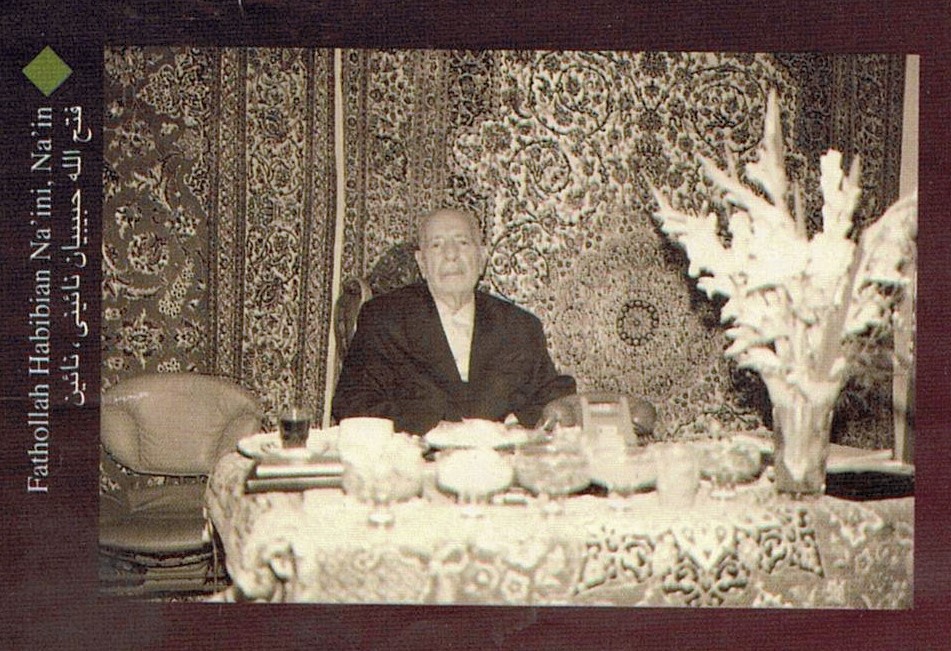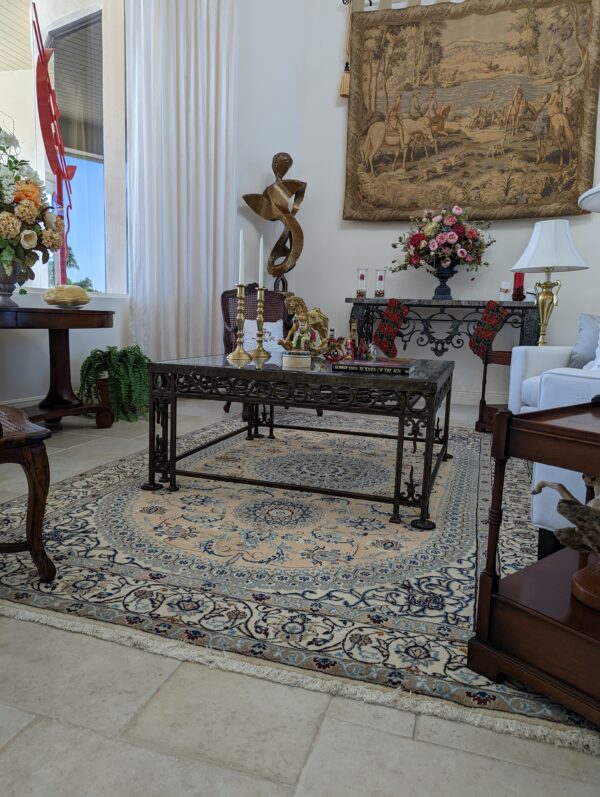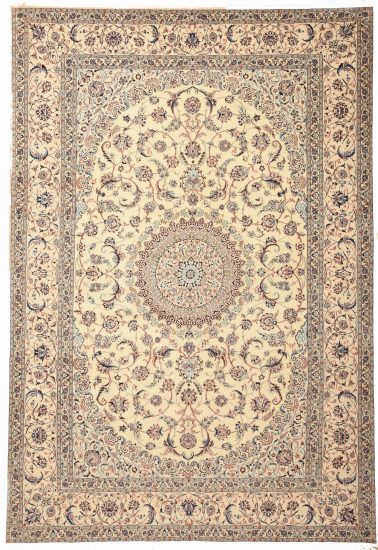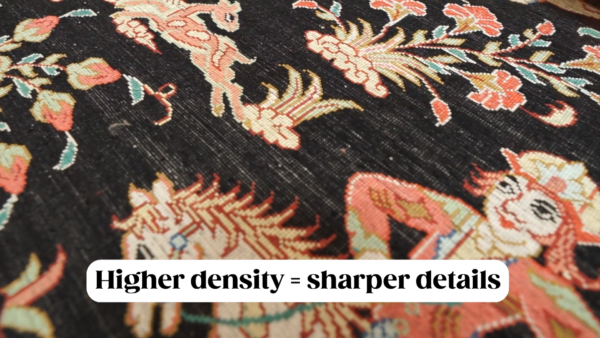Nain
Nain Rugs
The city of Nain has earned a reputation worldwide for producing some of the finest handmade rugs. The unique feature of Nain rugs is the high percentage of silk used in making the rugs.
In addition to the high quality of the material itself, the designs and the color combinations that the weaver use in their rugs are magnificent.
Origin of Nain Rugs
Nain is a small city located in the center of Iran, just a few kilometers away from the other famous rug-producing city of Esfahan.
Interestingly, unlike other rug-producing cities of Iran, Nain was not historically a rug-manufacturing city. Before the 20th century, the city was better known worldwide for manufacturing handmade woolen cloth of high quality.
Table of Contents
However, around the beginning of the 20th century when this business started to decline for several different reasons, the authorities began to look towards rug manufacturing. At first, they got their rugs woven by weavers from the nearby city of Esfahan.
This is one of the reasons why, when you look at contemporary Nain rugs, you will notice that many of these rugs have several similar design elements to Isfahan rugs.
However, despite these similarities, it is not too difficult to distinguish a Nain rug as they do retain their unique color and design characteristics.
This is because, once the local tribes within Nain started weaving their own rugs, they incorporated their own personal style into their work, giving it a few distinct features that make these rugs instantly identifiable.
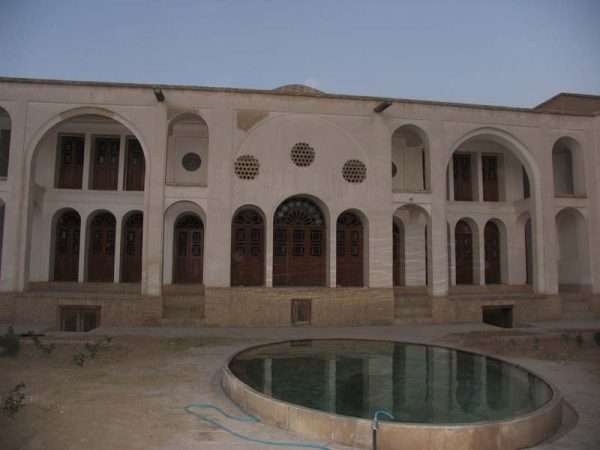
Nain Rugs Safavid Design
Nain rugs take their inspiration from the Safavid design. During their rule around 1502-1722, Safavid rulers changed the patterns and designs incorporated into the rugs.
They established schools, workshops, and factories where Nain weavers were encouraged and taught to create more sophisticated rugs with highly complex and elaborate designs.
The Safavid influence can be seen in the stylized medallions, floral patterns, tendrils, and mythical creatures featured in Nain rugs. Some highly skilled master weavers even wove human figures into their designs.
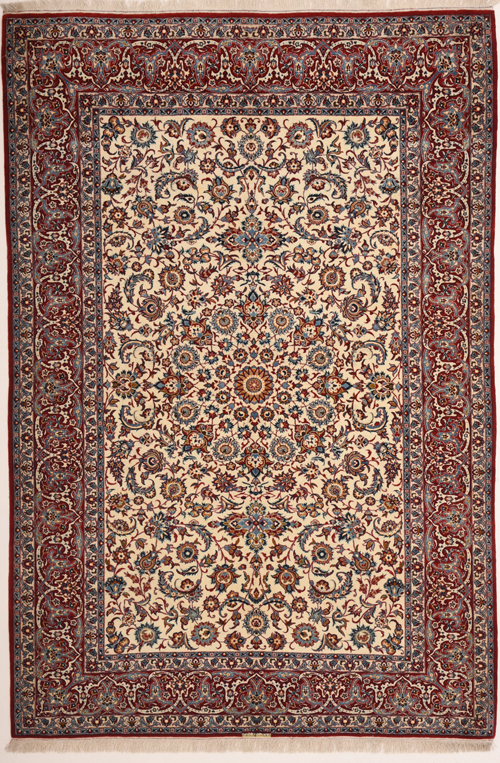
Who Is Master Artist Fatollah Habibian?
Master artist Fatollah Habibian is a well-known and highly revered Nain master weaver. He is widely regarded as the ‘Father of Nain rugs.’
Fatollah Habibian established one of the most renowned Nain rug-making workshops. All Nain rugs produced in their workshop were of the highest quality featuring fine, intricate designs and precise weaving techniques by skilled weavers.
Fatollah Habibian and his brother Mohammed Habibian ran the workshop until their deaths. The quality, trust, and prestige of the Habibian signature remain unparalleled.
Construction of Nain Oriental Rugs
Nain rugs usually have a cotton foundation and high quality kork wool and silk pile that is clipped short, which defines the design elements clearly. They are created using asymmetrical Persian knots.
The construction of Nain rugs differs from most other Persian rugs in that they are made up of depressed cotton warps and two shoots of cotton wefts. The warps are the cords that run up and down the length, while the wefts are the cords that run side to side. Pulling the wefts tightly from both sides displaces the warps into two levels resulting in a depressed warp.
Materials of Nain Rugs
Have you ever wondered what makes Nain rugs so soft to the touch and vibrant in color? The secret lies in the materials used to craft these rugs. Let’s explore these materials together.
First on our list is wool. Not just any wool, but high-quality wool that’s both durable and soft. This wool forms the foundation of many Nain rugs, giving them their characteristic warmth and durability. It’s like the cozy sweater of rug materials – comforting, sturdy, and timelessly stylish.
Next, we have cotton. Cotton is often used for the base or ‘foundation’ of the rug. It provides a solid backbone to hold all the intricate knots in the carpet in place. Without cotton, our rug would be like a city without roads – all over the place!
Now, let’s add a bit of sparkle. Enter silk. Silk is used in most Nain rugs, to outline designs and add a touch of luxury. When light hits these silk threads, they shine, making the designs stand out beautifully. Silk in a Nain rug is like the icing on a cake – it takes something already good and makes it even better!
And then, there’s the color. Nain rugs are known for their vibrant and long-lasting hues. These colors come from high-quality dyes that are carefully chosen to ensure the rugs retain their beauty for years.
Colors of Nain Rugs
Much like their Isfahan rug counterparts, Nain carpet rugs dance in a symphony of blues. You’ll find every variation of blue in these rugs, from the deepest midnight blues to the softest sky blues. The diverse use of blue imbues Nain rugs with tranquility and richness that can effortlessly complement any decor.
Other neutral colors like beige and gray-brown often join the ensemble, creating a harmonious backdrop against ivory or cream backgrounds. These neutrals act as the canvas, allowing the stunning rug designs to shine.
One more thing that makes Nain rugs unique is the use of white silk. This isn’t just any ordinary white – it’s a lustrous silk that outlines motifs. The result? The designs on the rug really ‘pop,’ almost like they’re coming to life.
While not as expected, you might spot green, yellow, and even orange splashes on a Nain rug. These colors are like surprise guests at a party – they’re not always there, but when they show up, they add a certain zest and vibrancy, highlighting particular design aspects.
Patterns of Nain Rugs
First, let’s introduce the star of Nain rugs – the Shah Abbas design. This style, named after a great Persian ruler, is like the signature dish of Nain rugs. It’s a delicious mix of elaborate and finely detailed curvilinear floral patterns. Picture sweeping lines and shapes weaving together to create flowers, plants, and more, all in a style that echoes the arabesque tradition.
Among these floral patterns, you’ll often find forked leaves. These little details add an extra level of intricacy to the rugs. It’s almost like walking through a garden, spotting different shapes and forms in the foliage.
But wait, there’s more! Look closely, and you might find some animal motifs tucked between the floral patterns. These critters add a playful touch to the elegance of the Shah Abbas design. They’re like hidden gems, popping up in unexpected places and making the pattern even more delightful.
And then, there’s the Islimi motif. This motif is like a constellation of star medallions, lighting up the rug uniquely. If you spot these stars in a Nain rug, you’re looking at the Islimi flower motifs, another sign of the careful craftsmanship that goes into these pieces.
End and Side Finishes of Nain Rugs
These finishes might not be the first thing you notice, but they play an essential role in the rug’s overall look and longevity. Just like the hem of a dress or the binding of a book, the end and side finishes of a Nain rug keep everything in place and look tidy.
Now, what do these finishes look like? On the sides of a Nain rug, you’ll often find a woven edge or “selvage.” This is a kind of sturdy boundary line that helps keep the rug’s shape and protects the edges from fraying. It’s like a strong fence protecting a beautiful garden!
As for the ends, they typically have a fringe, which is not just a decorative touch but also a part of the rug’s structure. This fringe is made from the warp threads that run through the rug from end to end during the weaving process. Once the weaving is complete, these threads are left loose at the ends, creating the fringe we all know and love.
Knot Density and Its Role in Nain Rug Quality
Ever wonder what makes a Nain rug so unique?
One secret is hidden within the rug – it’s all about knot density!
In simple words, knot density refers to the number of knots packed into a specific rug area. Picture this: if our rug were a tiny city, the knots would be the buildings, and the higher the buildings, or in our case, the more knots, the more ‘dense’ or ‘populated’ our city is.
So, why does knot density matter? A higher knot density often means a more detailed and durable rug. Think about it: more knots mean more threads, creating a more robust and intricate design.
Moreover, knot density can also influence how a rug feels beneath your feet. Rugs with a higher knot density tend to feel plusher and more luxurious when you walk on them.
‘LAA,’ The fineness Indicator Of Nain Rugs
‘LAA’ is a super handy term that tells us about the fineness of a Nain rug. When we say Nain carpets, we’re talking about the quality and detail of these rugs, we often talk about how many threads or ‘layers’ are used in their making. And that’s where ‘LAA’ comes in: the number of threads used to form each knot in the rug.
So, when you hear about a Six-LA, Nine-LA, or Four-LA Nain rug, it’s like getting an insider’s view of the rug’s craftsmanship. A Six-LA rug has six threads, a Nine-LA has nine, and the ultra-rare Four-LA, you guessed it, has just four threads.
Why is this important? The fewer the threads, the more detailed and fine the rug can be. Imagine an artist using a fine-tipped brush to create an intricate painting. That’s what it’s like with a Nain rug – the fewer the threads, the more detailed the designs.
Six-LA
Imagine an artist taking six strands of thread and weaving a world of patterns, shapes, and colors into a rug. That’s what a Six-LA Nain rug is all about. The “LA” stands for “layers” of thread, and we have six in the case of Six-LA.
Nine-LA
Next, let’s meet the Nine-LA Nain rug, the less intricate but equally enchanting sibling of the Six-LA. With nine layers of thread, these rugs feature less detailed patterns but still exude an undeniable charm. The Nine-LA rugs blend artistry with a sense of welcoming warmth, making them a delightful addition to any space.
Four-LA
Now, let’s talk about the gem of Nain rugs: the Four-LA. Spotting a Four-LA Nain rug is as rare as finding a four-leaf clover in your backyard! With just four layers of thread, these rugs showcase the most elaborate designs and the highest quality craftsmanship. You’ve found a rare treasure if you’re lucky to stumble upon a Four-LA Nain rug.
How Do You Choose Between These Rug Types?
It’s like picking your favorite dessert; it depends on your taste!
The Six-LA rug might tickle your fancy if you’re drawn to intricate detailing and superior craftsmanship.
The Nine-LA is your match if you prefer something less complex but still exquisitely charming. They’re considered good quality, but among the Nain rugs, they are of the lowest quality.
As for the Four-LA, if you happen upon this rarity, it’s like finding the golden ticket – a piece of art that takes center stage in any room. These types are considered the best.
Nain Rugs Sizes
Styling Nain Rugs for Various Interiors
Welcoming a Nain rug into your space is like inviting a touch of timeless elegance into your home. This remarkable accessory adds color, pattern, and history to your interiors. But to truly bring out its beauty, selecting the right size and pattern is important.
If you’re outfitting a large room, a large rug can bring all the room’s design elements together, creating a cohesive and welcoming feel. However, a more compact rug in a smaller room helps maintain balance and doesn’t overwhelm the space.
Pattern choice is another critical aspect. If your room is minimalistic, a rug with intricate patterns can be an eye-catching statement piece. Conversely, a simple, subtle rug can add a calming touch to a space already brimming with patterns and colors.
Whether greeting you in the morning from your bedroom floor or accentuating a special piece of furniture in your living room, the right Nain rug brings warmth and charm into your living space. While styling your room with a Nain rug, you’re also creating a connection to a rich cultural heritage and telling a unique, personal story through your interior design choices.
Care and Maintenance of Nain Rugs
Nain rugs, renowned for their superb quality and intricate designs, require thoughtful care to ensure longevity. Here’s a snapshot of essential care tips:
Cleaning: Regular vacuuming keeps your Nain rug vibrant and plush by removing surface dirt. Be gentle with the fringe, and consider using professional cleaning services every few years for a deeper clean.
Stain Removal and Prevention: Act quickly to blot spills and avoid permanent stains. For stubborn marks, professional help is best. Use rug protector sprays and keep potential spill sources away from your rug to prevent stains.
Repair and Restoration: When you see signs of damage, such as fraying or color fading, engage a rug repair specialist. A well-restored Nain rug can remain a centerpiece of your décor for decades.
Storage: Before storing your rug, thoroughly clean it to deter pests and mildew. Roll, rather than fold it, and store it in a dry, cool place. Periodically check the rug during storage for any issues.
Properly cared for, your Nain rug will retain its timeless elegance, adding beauty to your space and serving as a valuable investment for years.
Related Categories
Traditional Rugs | Tabriz | Silk and Wool Rugs | Qum | Isfahan
